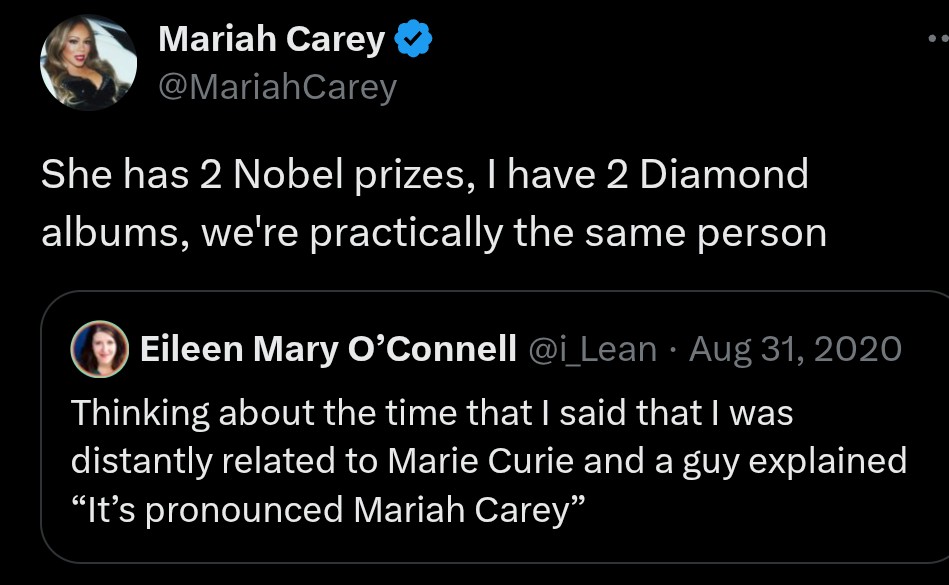I don’t know if reddit or other platforms were like this, but I’m enjoying memes evolving from previous posts from here.
@fossilesque@mander.xyz is working tirelessly to make it happen.
They were! This trend kind of died out because of growth and enshitiffication, and I’m very glad to see it coming back here :)
What a radiating smile!
She’s truly glowing!
The 235 belongs right of the U, you savage!
Various notations appear in older sources were used, such as Ne(22) in 1934,[1]: 226 Ne22 for neon-22 (1935)[2] or Pb210 for lead-210 (1933)[3]: 7
You kids and your newfangled notations *shakes fist at heaven*
I had some really old physics books when I went to school … and that has been a while.

The wife of Tim Curry

You know this wouldn’t even be in the top ten weirdest roles he has done. SPAESH!
SPAESH!
I love watching that clip because you can easily tell he had a lot of fun recording it
That was the first attempt, all the others were apparently all scuffed to shit cause he kept laughing his ass off.
He’s a great chef, his food got so popular it became a noun. You just go into a restaurant and ask for a Curry, they’ll know what you’re talking about.
They have been summoned. Soon they will arrive, and they will show no mercy.
🇵🇱
Kuurrwwaaaaaa to jest Maria Curie-Skłodowska, skurywysny znowu pominęliście Skłodowską!!!
I see U^235 and I relate an obscure fun fact: separating the isotopes of Uranium is an extremely difficult task because they behave identically in the chemical sense. One of the techniques developed by the Manhattan Project during WWII was electromagnetic separation. When a charged particle (or ion) moves through a magnetic field, it experiences a displacing force that is perpendicular to the direction of motion (which is pretty fucking strange in and of itself - imagine pushing an object on the floor and having the force of friction move it sideways instead of resisting your push).
This force perpendicular to the direction of motion causes the ion to travel a slightly curved path. The electromagnet separation technique involves creating a stream of ionized atoms of unrefined Uranium and firing it through a strong electromagnetic field; because the particles of U^238 and U^235 experience the same force during this, the U^235 ions, being slightly less massive, are displaced a bit more and so follow a slightly more curved path. By placing collectors at different positions, you end up with a small amount of U^235 and a large amount of U^238.
These giant electromagnets would normally have used copper wire for their windings, but copper was a strategically critical material for the war effort and was in very short supply. So the Manhattan Project basically checked out the United States’ silver reserves and used that for the windings instead (silver is not quite as good as copper for this purpose but is obviously better than nothing).
The electromagnets also used a lot of electricity, and this is why the Uranium-refining facilities were located in Oak Ridge, Tennessee. FDR’s WPA had built multiple dams around there during the 1930s, and their turbines were put to work generating electricity for the magnets (it was also used for the thermal and gaseous diffusion processes).
The Manhattan Project’s price tag is famously given as a round number of $2 billion dollars (in 1940s dollars), but this estimate does not take into account the value of these silver reserves or the cost of the WPA projects which were so critical to its success. The silver costs are a bit of a weird accounting item since all the silver (minus a surprisingly small amount lost to wastage) was eventually returned to the Treasury, but the last of it in use wasn’t returned until the 1970s.
You have summoned the polish horde
Oldie but goodie








